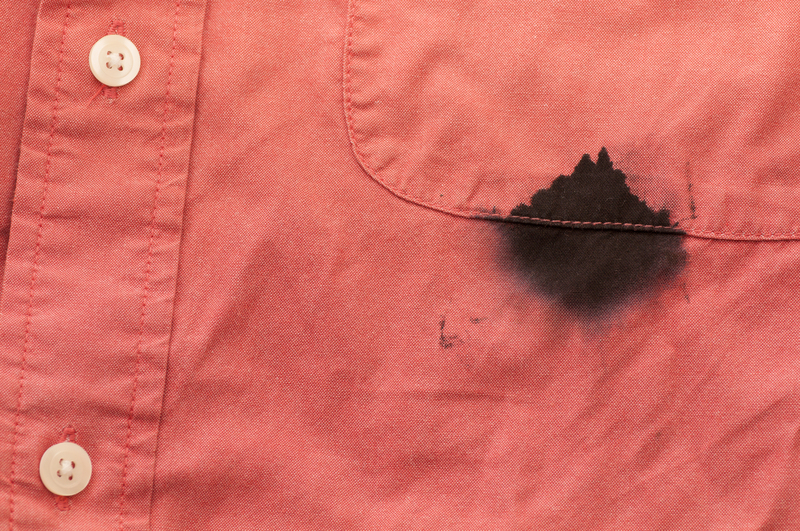Shimmering Gems: Discover the Art of Jewellery Cleaning
Posted on 02/07/2025
Shimmering Gems: Discover the Art of Jewellery Cleaning
Jewellery has captivated the imagination of humankind for centuries. From heirloom pieces passed down through generations to the latest contemporary designs, jewellery holds not just material value but also immense sentimental worth. However, with time and regular wear, your prized adornments may lose their initial luster. That's where the art of jewellery cleaning comes into play--a meticulous and thoughtful process that brings dull metals and cloudy gemstones back to their shimmering best.
Why Jewellery Cleaning Matters
Many people underestimate the importance of keeping jewellery clean. Everyday exposure to dust, sweat, perfumes, lotions, and even the natural oils on our skin can cause intricate pieces to accumulate grime and tarnish. More than a cosmetic concern, this build-up can weaken settings, dull gemstones, and even prompt allergies or skin irritation.
Here are some benefits of regular jewellery cleaning:
- Preserves Shine: Maintains the brilliance and color of metals and gemstones.
- Prevents Damage: Removes abrasive particles that could scratch delicate surfaces.
- Enhances Durability: Stops grime from weakening prongs and stone settings.
- Promotes Hygiene: Cleans off bacteria, allergens, and irritants.
- Maintains Value: Helps in sustaining the long-term worth of fine jewellery.

Understanding Your Jewellery
Before diving into cleaning techniques, it's crucial to know the specific composition and fragility of your jewellery. Not all pieces are created equal, and some require particularly gentle handling. Take note of:
- Type of Metal: Gold, silver, platinum, and mixed-metal pieces have different care needs.
- Gemstones: Diamonds, emeralds, pearls, and opals each have unique sensitivities.
- Age & Structure: Antique jewellery may be delicate or repaired and needs careful handling.
- Craftsmanship: Intricate designs with engravings or filigree can trap more dirt.
Types of Jewellery and Their Cleaning Needs
- Gold Jewellery Cleaning: Gold is relatively robust but susceptible to scratches from abrasive materials.
- Silver Jewellery Cleaning: Silver tarnishes easily, requiring more frequent but gentle care.
- Diamond and Gemstone Cleaning: Diamonds are tough, but settings and softer gems can be delicate.
- Pearls, Opals & Soft Stones: These require the utmost care, as they are porous and easily damaged.
Step-by-Step Guide to Jewellery Cleaning at Home
If you wish to bring back the shimmer to your favourite gems, you don't always need professional equipment. With a few household supplies, anyone can perform effective jewellery cleaning at home. Here's a detailed approach:
1. Gather Your Supplies
- Soft-bristled toothbrush or a dedicated jewellery brush
- A mild liquid dish soap
- Bowl with warm (not hot) water
- Lint-free soft cloth or microfiber towel
- Optional: Ammonia solution for robust metals (not for pearls or soft stones)
2. Prepare a Safe Cleaning Area
- Work over a soft surface: Use a towel to avoid jewellery bouncing away if dropped.
- Plug sink drains: Prevent any accidental loss of small items.
- Good lighting: Thoroughly inspect for dirt or loose settings.
3. Pre-Clean Inspection
- Check the integrity of clasps and prongs.
- Look out for cracks or chips in gemstones.
- If you discover loose stones, postpone cleaning and consult a jeweller.
4. Cleaning Technique
-
For Gold & Platinum Jewellery:
- Soak in lukewarm water with a little mild soap (about 10-15 minutes).
- Gently scrub with a toothbrush around prongs and behind stones.
- Rinse under clean water and dry with a lint-free cloth.
-
For Silver Jewellery:
- Create a paste from baking soda and water.
- Apply gently, then rinse and polish with a soft cloth.
- Use silver polishing cloths for extra shine.
-
For Diamonds and Hard Gemstones:
- Follow the gold/platinum method; diamonds can also handle a touch of ammonia diluted in water.
-
For Pearls, Opals, and Other Soft Gems:
- Never soak.
- Wipe delicately with a damp cloth; use clean water and avoid detergents.
- Allow to air dry completely before storage.
5. The Finishing Touch
- Buff surfaces gently to restore shine.
- Lay flat on a clean towel to air dry thoroughly.
- Inspect for missed spots and repeat if necessary.
Professional Jewellery Cleaning Solutions
For rare, valuable, or intricately designed pieces, professional jewellery cleaning can be an excellent investment. Modern jewellers offer several advanced cleaning methods including:
- Ultrasonic Cleaning: Uses high-frequency sound waves to dislodge even the tiniest dirt particles from settings.
- Steam Cleaning: Directs concentrated steam to remove persistent grime and restore brilliance.
- Specialist Polishing: Jewellers employ variable-speed polishers to remove fine scratches, restoring high-gloss finishes.
- Rhodium Plating: Necessary for white gold items, this treatment renews reflectivity and prevents yellowing.
Note: Not all gems and settings can withstand these treatments, so always consult your jeweller before proceeding.
Common Mistakes to Avoid During Jewellery Cleaning
While the idea of jewellery maintenance is straightforward, certain pitfalls can lead to permanent damage. Here's what you should never do:
- Avoid Harsh Chemicals: Bleach, chlorine, and acetone can corrode precious metals and dull stones.
- Don't Overuse Abrasives: Toothpaste, baking soda, and hard brushes can scratch gold and soft gems.
- Never Soak Porous Stones: Pearls, turquoise, and opals are susceptible to water damage.
- Beware of Ultrasonic Cleaners: Loosely set or fragile jewellery can break apart in these machines.
- Skipping Inspection: Ignoring loose stones or weak clasps can result in loss or further breakage.
Ongoing Jewellery Care and Storage Tips
Minimizing the frequency of cleaning by maintaining proper jewellery care and storage habits can keep your jewels dazzling day after day.
- Store Separately: Use soft pouches or lined compartments to avoid scratches.
- Avoid Sunlight & Humidity: Excess light and moisture can alter metal color and weaken some gems.
- Remove Before Rigorous Activities: Take off rings and bracelets before swimming, exercise, or household chores.
- Apply Cosmetics First: Perfumes, lotions, and sprays should be applied before wearing jewellery to minimize residue.
- Regular Professional Checks: Have prongs and clasps checked annually for any signs of wear.
Eco-Friendly Jewellery Cleaning Techniques
Environmentally conscious consumers can opt for natural jewellery cleaning methods. These avoid harsh chemicals and minimize damage to both the earth and your favourite pieces.
- Use Vinegar: Soak silver jewellery in diluted vinegar for a gentle, effective clean.
- Baking Soda Paste: A soft paste removes tarnish from silver without scratching.
- Lemon Juice: Diluted lemon juice brightens gold, but avoid this method for gems and plated pieces.
- Sparkle with Seltzer Water: Bubbles can help dislodge dirt from gold and diamond settings.
- Polish with Microfiber Cloths: No chemicals needed--just a gentle buff for restored shine.
Remember: Always rinse thoroughly to remove any acid or residue.
When to Seek Professional Help
Not all jewellery cleaning jobs are DIY affairs. Consider professional attention if:
- The piece contains engravings or filigree that's difficult to clean at home.
- You notice loose stones, major tarnish, or structural damage.
- Antique or high-value pieces need extra care to avoid loss of value.
- After years of build-up that regular cleaning can't resolve.
A reputable jeweller will not only clean your pieces but also perform any required repairs, safeguarding your investment for generations.

Frequently Asked Questions on Jewellery Cleaning
How often should I clean my jewellery?
As a rule of thumb, simple pieces worn daily should be cleaned every 1-2 weeks. For more delicate or seldom-worn items, a gentle clean every couple of months suffices. Professional inspections are best done annually.
Is it safe to use ultrasonic cleaners at home?
Home ultrasonic cleaners are effective for some jewellery, especially plain gold or diamond items. Avoid using them for pearls, emeralds, opals, antique, or heavily set jewellery, as the vibration can loosen stones.
What is the best way to clean engagement and wedding rings?
Soak in warm, soapy water and use a soft toothbrush to gently remove any buildup. Rinse and buff dry. Avoid harsh scrubbing and always check the settings to ensure stones stay secure.
Can toothpaste clean jewellery?
It's not recommended. Toothpaste is abrasive and can scratch metals and softer stones, dulling your piece over time.
Conclusion: Illuminate the Beauty of Your Shimmering Gems
The art of jewellery cleaning is a blend of science and affection--combining effective methods, the right materials, and a gentle touch to ensure your treasured pieces always dazzle. By following the tips in this comprehensive guide, you'll keep your jewellery clean, safe, and sparkling for many years to come.
Remember, shimmering gems are not merely decorative--they are reflections of life's milestones, heritage, and cherished memories. Treat them with care, and let their brilliance accompany you through every moment.
Ready to restore your collection's sparkle? Start with a gentle clean today, and rediscover just how radiant your jewellery can be.









